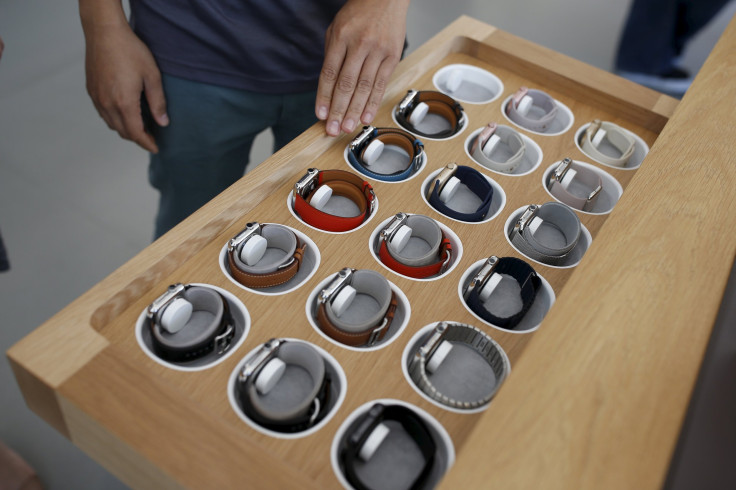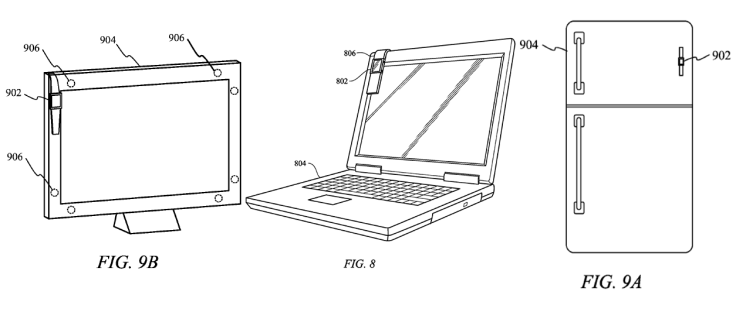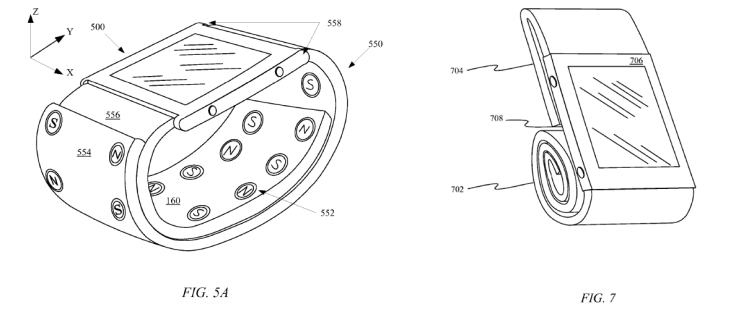Apple Watch Magnetic Band Shown In Apple Inc. Patent Could Double As Stand And Mac Mount

While an Apple Watch strap may be primarily used to secure the device to your wrist, a future band from Apple could have its customers mounting their watches on a refrigerator or using them as a watch stand — all through the use of magnets.
An Apple Inc. patent application published by the U.S. Patent and Trademark Office Thursday, titled “Magnetic Wristband” details a new type of band that could be used with its Apple Watch. While its primary application would still be keeping the smartwatch attached to a person’s wrist, the design would also allow it to be used in a number of different configurations.

In one setup, Apple proposes using the band to wrap itself around the device to protect it against damage while not being worn. In other cases the magnets built into the watch could be used to attach the Apple Watch to another magnetic surface, such as a refrigerator door, or a dedicated metal mounting point on an iMac or MacBook.
Alternatively, the watch band could also be wrapped in a way to turn it into a desk stand that props it up at an appropriate viewing angle. While Apple does have a few magnetic bands available for sale currently, the patent illustrations detail a two part design instead of the single loop-band configurations offered with its Milanese loop and leather loop wristbands.

It’s one of many ways Apple has explored bringing new straps to the Apple Watch, such as a band that can also double as a simple lighted display, according to one of its patent applications published in December.
As with many of Apple’s patent applications, it’s unknown if or when it plans to bring its invention to market. Apple filed the application for this patent on Aug. 31, 2015 and credits Apple design engineer Erik G. De Jong as the inventor.
© Copyright IBTimes 2025. All rights reserved.




















